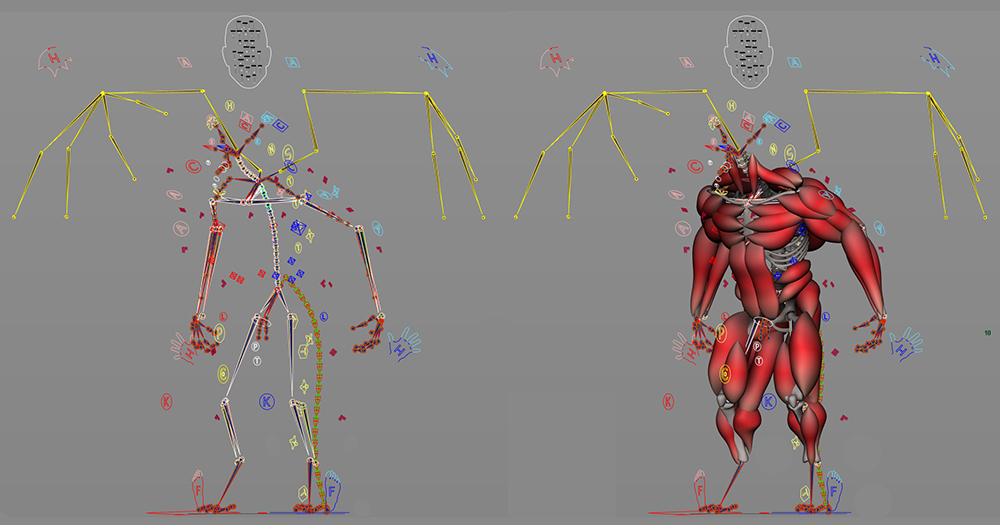Rigging/Set-up
What does a Rigger/Set-up Artist do and what are some of the skills required to create a successful animation?
Riggers/Set-up artist take the completed geometry or assets from the 3d modeler and we create a control system for the animator to use. Set-up Artist are experts at manipulating the geometry of characters and other assets in their interaction with environments. Riggers accomplish this through a real world understanding of physics and anatomy, and we bridge this information into the technical aspects of the 3d software we are using.
Rigging is a very tedious process. It requires creativity, precision, and an eye for detail. As such, Set-up Artist are responsible for using computer programs to form skeletons by creating a series of bones that deform and animate specific parts of the 3d model. Riggers may also help develop tools for animation production processes, collaborate with modelers and animators, and develop new techniques to solve production challenges. Set-up Artist work in animation studios, for game design companies, web design firms, and computer software companies.
Rigging is not just for character/puppet animation, the same techniques can be applied to vehicles, weapons, and other props with engineering aspects that require movement and manipulation.
What is a character rig? What are the required parts or systems for a high quality animation production?
A character rig is essentially a digital skeleton bound to the 3d geometry. Like a real skeleton, a rig is made up of joints and bones, each of which act as a “handle” that animators can use to bend the character into a desired pose. A character rig can range from simple and elegant to staggeringly complex. A basic setup for simple posing can be built in a few hours, while a fully articulated rig for a feature film might require days or weeks before the character is ready for feature film level animation.
Other elements of a character rig can require muscle systems or soft body dynamics to give the animation secondary effects like jiggling and bouncing. These same properties can be given to hair and clothing which can give the character a more life like appearance. A simple or complex facial control system can be added to give the character the ability to emote and speak (Often the shapes of the face are created by the 3d Modeler in the form of blendshapes).
Technical breakdown of a character rig (Body and head; does not include hair, clothing, or accessories. A rig may include a few or all of these categories):
- System Hierarchy and Naming Conventions
- Internal Skeleton/Joint System
- Forward Kinematics for Single Joint Action
- Inverse Kinematics for Multi Joint Action
- Degrees of Freedom/Constraint Systems
- Puppet Control System for Animation Artist (Includes Body and Face)
- Squash and Stretch for Secondary Action
- External Bound System for Post Production/Rendering
*Depending on how complex the character, each of these categories can easily require multiple subcategories depending on the requirements of the production.


Recent Comments